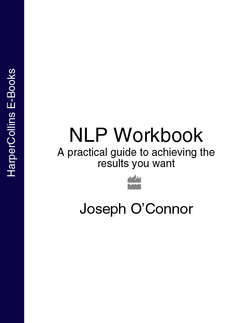Читать книгу NLP Workbook: A practical guide to achieving the results you want - Joseph O’Connor - Страница 17
CHAPTER 3 LEARNING
Оглавление| Learning is usually defined as acquiring knowledge, skills and abilities by study, experience or being taught. But that is the result. What about the process? How do we learn? |
Learning always involves self-development – learning to act differently, think differently and feel differently. Learning is natural. We learn all the time; it is part of adapting to changing circumstances. We do not always think of this as learning, however.
Learning is not the same as teaching and may have nothing to do with teaching. We may learn some things by being taught directly and other things in the process. For example, we may be taught different subjects in school and in the process may come to believe that we are not very good at learning, when in fact we are not very good at being taught. Many schools are not very good places to learn.
Learning is not the same as education either. Education describes the results of learning and is often tested by examinations. The origin of the word comes from the Latin educere, meaning ‘to draw out’. Education is about teachers drawing out students’ resources and abilities in line with the NLP presupposition ‘Everyone has all the resources they need already, or can acquire them’. This presupposition empowers both teacher and student.
You cannot have a teacher without a learner; teaching cannot exist as an activity by itself. It makes no sense to say, ‘I taught the subject but the students did not learn it.’ That is the educational equivalent of the medical joke ‘The operation was a success but the patient died.’ The teacher is also a learner, although they will learn something different from the person they are teaching.
Too often education is seen as the teacher pouring knowledge into the empty vessel – the student. This is not education, it is knowledge injection. This presupposition leaves the teacher literally ‘drained’ and the student feeling dependent and ‘knowledge bloated’. Examinations can create ‘educational bulimics’ – stuff it in quickly beforehand and then regurgitate it at the right time to clear space for the next binge.
| LEVELS OF LEARNING |
Traditional learning can be divided into four main stages:
Unconscious incompetence. You don’t know and you don’t know you don’t know. Think of some activity you do well now, such as reading, playing a sport or driving a car. Once upon a time you did not know anything about it. You were not even aware of it.
Conscious incompetence. Now you practise the skill, but you aren’t very good. You learn fast at this stage, though, because the less you know, the greater the room for improvement. You get immediate results.
Conscious competence. Here you have skill, but it is not yet consistent and habitual. You need to concentrate. This is a satisfying part of the learning process, but improvement is more difficult. The better you are, the more effort is needed to make a noticeable gain.
Unconscious competence. Now your skill is habitual and automatic. You do not have to think about it. This is the goal of learning, to put as much of that skill as possible into the realms of unconscious competence, so your conscious mind is free to do something else, for example, talk to the passengers and listen to music while driving a car.
This is the traditional learning path. I think there is one further step:
Mastery. Mastery is more than unconscious competence, it has an extra aesthetic dimension. It is not only effective, but also beautiful to watch. When you have reached mastery, you no longer have to try, everything comes together in a constant flow, you enter a ‘flow state’. This takes time and effort to achieve, but the results are magical.
You know when you are watching a master because although you may not appreciate every facet of their skill, they make it look easy.
Learning at any level takes time. It takes about 1,000 hours to reach conscious competence at any worthwhile skill. It takes about 5,000 hours to reach unconscious competence. And it takes about 25,000 hours to reach mastery.
There are two short cuts. The first is good teaching. A good teacher will keep your level of motivation high, divide the work into manageable chunks, give you a constant series of small successes, keep you in a good emotional state and satisfy your intellectual curiosity about the subject. They will also be good at the subject themselves and accelerate your learning by being a good role model. They will not only give you the knowledge, but also a good strategy for learning it.
The second short cut is accelerated learning. Accelerated learning goes directly from stage one (unconscious incompetence) to stage four (unconscious competence), bypassing the conscious stages. NLP modelling is one way to accelerated learning.
